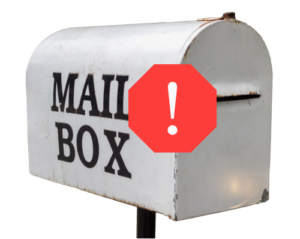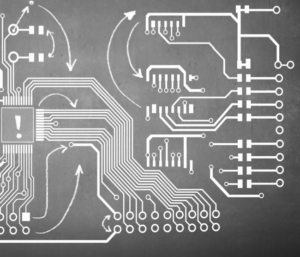By Flint Lane, Founder & CEO, Billtrust
One of the most important books I’ve ever read is What Got You Here Won’t Get You There by Marshall Goldsmith. As the title suggests, it’s a must to be constantly evolving – both as a business and an individual – if you are going to grow and achieve your goals consistently.

It’s the same with B2B payments. What worked great yesterday for organizations probably won’t today…and certainly won’t tomorrow. I believe it’s indisputable that relying on paper checks and the USPS simply won’t get companies where they need to be in terms of cash flow.
In fact, with recent news announcing slower first-class mail service, it’s becoming harder for organizations to continue to depend on paper checks and the US mail for payments, things that many consumers have long ago left behind with the advent of Venmo and Zelle. But a lot of businesses still do, and here are some reasons why.
Ultimately, the goal of any company’s accounts receivable function is to get paid. But before that happens, many steps have to occur, starting with establishing credit, processing orders, and invoicing. In B2B, that still often means mailing a paper bill – or faxing it, emailing it, or entering it into an online accounts payable portal. Of course, once the invoice is received, payment can be made in various ways, including check, wire, ACH, and credit card.
The systems integration challenge
But more challenging than accepting any form of payment is properly applying those payments and the associated remittance information to an ERP like SAP or Oracle. The big challenge with receiving electronic payments in B2B is that the remittance data – literally information about what invoices are being paid – comes separately from the payment, most often in an email.
If I’m running a large AR department, I’m paying people to sift through thousands of emails that come in each month to match them to bank account deposits. And although that’s wildly inefficient, paper checks, for all their faults and the friction they cause, do offer outstanding remittance information.
Getting there from here with automation

So, if what got you here were paper checks, bank lockboxes, and a large, office-based AR staff dedicated to manual processing, what will get you there is automation, digital lockboxes, interoperability, and the tools to support a remote workforce.
Above all, to succeed digitally, get paid faster, and maximize cash flow, the most important thing is to make it attractive for buyers to transact with you digitally. And that’s where automation can make a tremendous impact. If you’re a supplier, start by sending invoices electronically to your buyers, which sets the stage for paying you the same way. Next, enable buyers to make payments on your website, which can automate the process of posting remittances to your ERP. The gas, electric, and cable TV companies do it. Why not provide that same convenience to the B2B buyer?
If your customer is too large to visit your website because they are buying from thousands of suppliers, receive their payments by ACH/EFT and support it with a cash application system that automatically extracts remittance for posting to an ERP. Even for customers who want to pay by phone, a PCI-compliant B2B virtual terminal can offer Level 3 interchange discounts while supporting both ACH and credit card payments.
What gets you there is also accepting payments directly from buyer ERPs and accounts payable platforms. With the help of B2B payments networks, which automatically connect suppliers with banks, ERPs, and accounts payable platforms buyers are using, payments move to you more like they do in the consumer world. Digital lockboxes can also automate, capture, and process remittance data from email and accounts payable portals and format it to be compatible with your AR system.
Support work-from-anywhere advantages

One last thing to consider. All these activities support the remote workforce and the work-from-anywhere culture that’s here to stay. Manually processing paper checks and relying on one mailing address just doesn’t work when the workforce is widely dispersed.
But digital B2B payments solve that. More importantly, this kind of B2B digital transformation also gives CFOs and other financial professionals the ability to reliably predict and maximize cash flow which can protect the bottom line.

Flint Lane is the Founder & CEO of Billtrust, a leader in B2B payments and the order-to-cash cycle for the world’s largest brands. The company has processed invoices of more than $1 trillion in 40 major verticals globally. Before founding the company in 2001, he was Founder, President, and Chairman of Paytrust, the leading electronic bill presentation and payment (EBPP) company with over 100,000 customers nationwide. He also held executive positions at Platinum Technology, Logic Works, and BrownStone Solutions.
Recent PaymentsNEXT posts:
The Case for Cash: 3 Reasons Why Digitizing Cash for Bill Pay Makes Business Sense
Financial fraud ramps up as holiday shopping season looms

